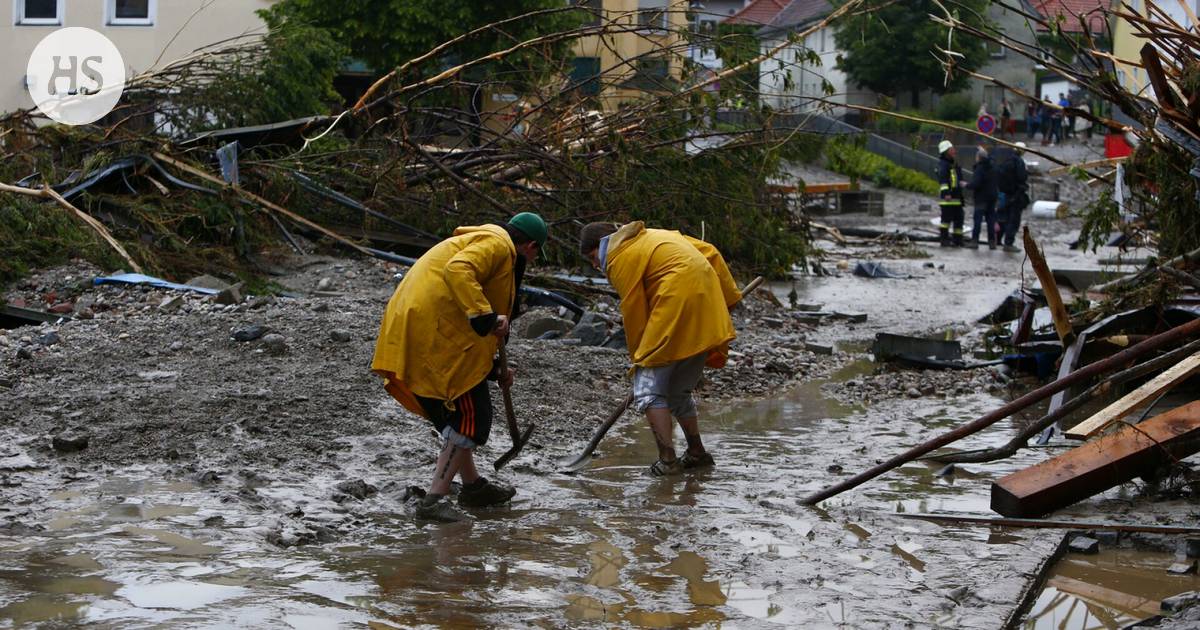Europe is not sufficiently prepared for climate risks that are intensifying more and more rapidly.
Europe is already facing dangerous situations, and in about 80 years, many risks will intensify from dangerous to destructive.
Climate change is testing Europe's energy system, food production, the adequacy of drinking water, people's health, roads, railways and buildings and the economic system, as well as nature itself.
The European Environment Agency has come to this assessment in its review, which was published today, Monday. An overview on climate risks has now been prepared for the first time. The review was commissioned by the European Commission.
The goal of the review is to help politicians focus on the most important risks and strengthen preparedness for the most serious threats.
Risk review has found 36 significant climate threats for Europe. More than half of these (21 items) would require additional preparation, and 8 of the threats require urgent action.
These eight danger points that require the most urgent action extend to ecosystems, food production, human health, the built environment and the economy:
Marine, coastal and forest habitats are the ecosystems most at risk.
In terms of food production, the most serious place of danger is on farms in Southern Europe. Health is most threatened by heat stress. The biggest threat to buildings and roads is flooding.
The European Solidarity Fund, which supports recovery from natural disasters, requires the most immediate action in the economy.
Marine and coastal ecosystems are threatened by heat waves, acidification, oxygen depletion, pollution and eutrophication.
All of this, in turn, can cause mass deaths, the impoverishment of marine nature, the weakening of carbon sequestration in the seas, the reduction of fish stocks and many other problems. It is feared that oxygen-free, dead seabeds will expand, especially in the Baltic Sea and the Black Sea.
It is feared that both carbon reserves and biodiversity will disappear from the forests. This is a particularly big danger in southern Europe, where forests are at risk due to drought, heat and wildfires.
Southern Europe in general, is the area where the effects of climate change hit the hardest. Southern Europe may face persistent heat waves and extensive and prolonged droughts.
This means more heat deaths, crop losses, uncontrolled wildfires, a shortage of drinking water, and the withering of livelihoods such as tourism and agriculture.
Heat risks to health are already at a dangerous level in Southern Europe, and they are predicted to intensify to a disastrous level in a few ten years.
Other areas have other puzzles.
Sea floods are a threat on the coasts further north, river flooding in Central Europe. In Northern Europe, forestry may be the one to suffer. The plant and animal species of the Alps and Lapland are particularly vulnerable to climate change, as they can no longer move higher or further north.
Poverty, unemployment and an aging population make it difficult to adapt to climate change in more remote regions. On the other hand, heat island phenomena occur in large cities, where the heat can develop to dangerous levels.
“Heat waves also occur in Finland in the summer, and the healthcare system is not necessarily adequately prepared for this,” says the Director General of the European Environment Agency Leena Ylä-Mononen.
Climate change it is typical for disadvantages that different chains of effects arise from them. Drought, heat, heavy rains and floods can take lives but also destabilize energy production and electricity transmission as well as food production.
Crop losses, on the other hand, can cause food shortages or at least increase the price of food. This hits low-income people the hardest. This, in turn, can affect both people's health and the unity between different groups of people, and thus even the stability of Europe.
“Solutions can also be found elsewhere than where the problem itself occurs. For example, deaths caused by heat waves are not necessarily prevented by health care, but by, for example, urban planning and building regulations,” says an expert from the European Environment Agency Hans Martin Füssel.
A state of emergency was declared in Sicily at the end of February due to severe drought.
Extensive wildfires raged in Rhodes last July.
Divers risks are not only threats to the future. Many of them have already come true.
Of the Earth's continents Europe is now warming the fastest. Parts of southern Europe are already desertifying.
The tropical fever disease dengue was transmitted by mosquitoes in Southern Europe, especially in 2022 and 2023. There have also been a few outbreaks of another tropical fever disease, chikungunya, in Europe.
In the summer of 2022, dead fish washed up week after week in the Oder River on the border between Poland and Germany, a total of about 360 tons, when a strong bloom of infectious algae (Prymnesium parvum) produced algae poison in the river.
Due to the dry spring and early summer of 2023, some Spanish farmers did not start sowing at all.
In the same summer, Greece first suffered from intense heat, drought and wildfires. In late summer and autumn, Greece was lashed by heavy rains and storms. The country's important grain-producing area, the Thessalian plain, was under water for many days.
In 2023, Slovenia also suffered from violent floods that affected two-thirds of the country. There were huge costs and losses, a few people died and the production of the nuclear power plant had to be stopped.
In Germany, freight transport on the Rhine was made difficult or prevented due to drought and low water levels at least in 2022 and 2023. Severe floods and mudslides in Germany have been in the news at least in 2021, 2022 and 2023.
There have been violent wildfires in various parts of Europe last summer and the following summer.
The record hot summer of 2022 was about to cause 60,000-70,000 premature deaths in Europe.
What European decision-makers should then do?
“Climate issues should be among the most important issues in EU politics in the next term. Hopefully that message will be clear from this,” says Ylä-Mononen.
The European Parliament elections will be held in June and the new Commission is expected to start in early 2025.
According to the risk review, it would be important to protect and strengthen habitats threatened by climate change, i.e. to reduce human-caused stress on seas, beaches and forests.
This would be helped by the implementation of the current decisions. For example, in the EU's biodiversity strategy, it is promised to protect 30 percent of the EU's land and sea areas. The report separately mentions the protection of forests, the implementation of the restoration decree is also emphasized.
“We can't cool the oceans, but we can influence fishing pressure,” Füssel cites as an example.
The review warns the EU not to rely too much on carbon sequestering forest sinks. Instead, the focus should be on reducing emissions even more quickly.
The agricultural support system should be developed so that plants that use little water and are drought tolerant could be supported. The diet should partially shift from animal-based products to plant-based foods, which would reduce both the need for water and the dependence on imported feed.
Building standards should be based on future climate modeling rather than historical climate statistics. Cooling buildings should not produce more emissions.
Agricultural and construction workers in particular need stricter occupational health and safety regulations in case of heat. Health care should be strengthened. In health crises caused by extreme diseases, doctors and nurses should be able to be moved across state borders. One option could be separate first aid teams for extreme weather crises.
#Environment #Climate #risks #worsening #faster #Europe #time #prepare









